Bringing a dog into your family can be hugely rewarding. Bringing many years of joy and fond memories. Before getting a dog you probably already had an idea in your head of what it will be like. Enjoying leisurely walks with your chosen companion happily by your side. Playing fetch and other games with them.
These things are possible and achievable, but they will not magically happen overnight and your dog will not instinctively know what’s expected of them. Training your dog will require work and effort.
Why It’s Important To Train Your Dog.
A dog will not automatically know what you want them to do. You will have to be prepared to teach them the behaviors that you expect from them. They will have to be taught their boundaries.
Puppy Classes and why they are important
Puppy classes are important for a couple of reasons. The first being that you will need to socialize your puppy in order for it to begin to learn how to behave around other dogs.
Your dog will have to learn good manners. Especially since puppies are used to being boisterous and playful with their littermates.
They need to learn how to greet other dogs in a non-confrontational way. Not every dog will be happy to be bounced on by an over-excited puppy.
What if my dog isn’t a puppy?
Even if your dog is not a puppy, training classes are still a good way to help socialize your dog. Not every dog knows how to behave appropriately with other dogs.
Some dogs are fearful of other dogs. Either due to lack of socialization when they were a puppy, or bad experiences when they were younger.
Puppy classes aren’t just for dogs
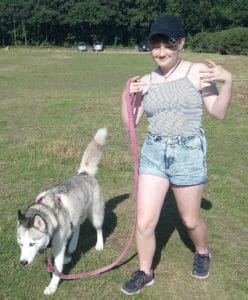
The other reason for attending puppy classes is so that you, the human, can learn how to teach your dog the behaviors that you want.
In my opinion, I feel that this is actually the most important reason to go to puppy classes. You will learn the best way to train your dog. And in a way that your dog enjoys!
Puppy classes should include the whole family.
Children especially need to learn how to interact with your dog. Teaching your children how to interact appropriately will keep them safe. It will also build a bond between them and your dog.
A good puppy class will teach you how to get the best from your dog. It will also teach you about your dog’s body language and what it’s trying to tell you.
Why should I go to classes? I trained my older dog myself
The science behind canine behaviors is progressing like every other science. With knowledge improving, better techniques are being developed to help you to train your dog.
So even if you have had a dog and trained it previously, it is still a good idea to attend puppy classes. They will probably have new techniques to teach you. Gone are the days of teaching your dog using force or fear.
Will Any Dog Training Class Do?
There are a lot of professional trainers out there, and there are different types of training techniques and tools available.
Not all training techniques or tools are good for your dog.
You should ask what type of training the trainers advocate and teach, and what ‘tools’ they use and why they use them.
- Aversion/Aversive training techniques teach your dog negatively. In other words, your dog learns what not to do by being punished whenever it does something wrong. This can lead to your dog being anxious or fearful of doing anything in case it gets punished.
I personally would not like to have a fearful dog in my home. One of the main reasons a dog will bite is because it’s afraid. Not only that, but a fearful dog will also be difficult to train, as it will be reluctant to try to learn anything new for fear of getting it wrong. - Shock Collar training gives your dog an electric shock in its neck every time it does something that you do not want it to do. This is an aversion tool. Your dog learns through negative experiences and pain.
Like aversion training, your dog will become fearful of learning anything new and will be afraid of you. You also risk your dog redirecting its pain response onto another dog or person by biting them. - Vibration collar training is similar to the shock collar, instead of an electric shock, it vibrates against their neck startling the dog. Although it doesn’t seem as cruel as the shock collar it is still an aversive training tool as the dog is learning negatively what not to do. A startled dog can still redirect towards another dog or person.
- Choke collar/Prong collar when used to teach lead walking it basically chokes the dog whenever they pull on-lead. A prong collar not only chokes the dog but digs prongs into their neck whilst choking them. Both are cruel and inhumane.
They can cause long term damage to the dog’s neck and spine. Science has proven that contrary to popular belief, a dog’s neck is just as easily damaged as a human’s neck.
Not only do they cause damage, but the dog doesn’t actually learn to walk properly on-lead, it learns that when it is wearing that collar it will receive pain. - Positive reinforcement training techniques teach your dog by rewarding positive behaviors that you want to encourage. Every time your dog displays a behavior that you want them to have you reward them.
In the beginning, it tends to be treated based on a positive word like ‘yes’. Your dog then associates the good behavior with a treat and the word ‘yes’.
Since your dog is receiving positive associations with learning new things it will not be afraid to learn. Most importantly it will not be afraid of you. - Force-free training techniques allow your dog to learn new things without being pressured or forced into doing them. Force-free training is often done along-side positive reinforcement training.
You teach your dog the words for their behavior as they do them naturally. For example, if you see your dog begin to sit then you would say the word sit and reward and praise them when they complete the sitting. This way your dog learns to associate the word sit with the sitting action.
You are not forcing or pressuring your dog to perform the action but teaching the commands for behaviors that you want your dog to learn. - Clicker training teaches your dog to respond to the clicker noise from your clicker. For example, one-click for sit, two clicks to come here. This is usually combined with voice commands and positive reinforcement training.
- Whistleblowing is most commonly used in recall training. For example, two short whistle blasts mean come here. This is most often used along-side positive reinforcement training. Although I have heard of people using it along with shock collars or vibration collars, which I do not agree with. Sheepdogs tend to be whistle trained.
Why Should I Choose Positive Reinforcement Training for My Dog?
Many advocates of aversion training and shock collar training say that the dog learns faster with their techniques. This may be true, dogs are smart. They will learn quickly not to do something if they are punished or have pain inflicted on them.
However, if the dog expects punishment or pain regularly then it may shut down and be unresponsive to new learning experiences. It may become fearful and eventually redirect its fear towards another dog or person.
Either way, your dog will not trust you if it experiences punishment or pain whenever it does something in your presence.
A Happy dog is happy to learn

A dog trained using positive reinforcement methods learns from positive experiences. They quickly learn what behaviors bring them rewards and praise and will happily repeat those behaviors.
Repeating the behaviors and having them rewarded and praised embeds those behaviors in your dog.
This also helps to create a bond and trust between you and your dog. This leads your dog to enjoy being with you and eager to learn new things.
You also run a much lower risk of your dog biting as it is not fearful of you. A happy dog is much easier to train than a fearful dog and is a lower risk dog.
Positive reinforcement is not passive
Positive Reinforcement and force-free training do not mean that you do not correct your dog’s undesirable behaviors. It simply means that you do not cause your dog fear and stress when teaching them.
For example, if you are working with your dog to teach them loose lead walking and your dog pulls, you do not yank them back on the lead and shout at them. You would simply stop moving, stay still until your dog corrects themselves, i.e. your dog will move back beside you and be ready to begin again.
Force-free training is not a quick fix
Force-free and positive reinforcement training may take longer to achieve, but the results are very worthwhile. You will end up with a happy dog who wants to please you and that you can safely take out into the world.
Aversive training and tools may seem like a quick fix for unwanted behaviors, but recent studies are showing that dogs trained with these methods suffer from stress and anxiety and are more likely to bite.
The American Veterinary Society of Animal Behaviour and the Association of Professional Dog Trainers have more information on Positive Reinforcement training and why you should train your dog using this method.
Basic Commands That Dogs Need To Learn
Every dog needs to learn some basic commands, like sit and down. There will be times when you need your dog to sit quietly or lay down quietly, so these are often the first commands that dogs learn.
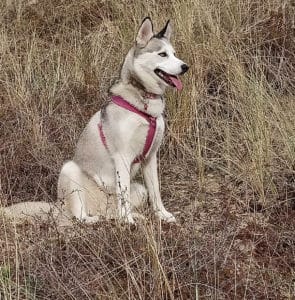
- Stay You will want to teach your dog Stay especially if you don’t want them to dash outside every time you open your front door.
- Heel is a command often used to direct the dog to walk close to you. Personally, I tend to use everyday language in training my dog. Instead of Heel, I say, ‘with me’.
- Wait, is another command that is useful. You may be walking your dog or it may be off-lead and you need your dog to wait on you to catch up or to wait to cross a road.
- Look At Me/Focus is a good command to teach your dog. It teaches your dog to look at you/focus on you for direction. Taught using positive reinforcement, it tells your dog that good things happen when they look/focus on you.
This can come in handy if you are walking your dog and don’t want them to be distracted by another dog, cat, person/vehicle. - Stop is a very useful command, and essential in an emergency. Whether your dog is on-lead or off-lead you should be able to give this command and stop them from going any further.
These are only a few basic commands that your dog should know to keep them safe and allow them to be around less dog-savvy people without problems.
On-Lead Dog Walking
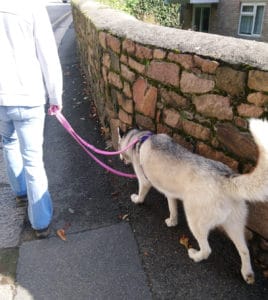
On-lead walking is a basic skill that all dogs should learn no matter what size or breed they are!
Unfortunately, many people don’t take the time to teach their dog how to walk on-lead properly. They allow their dog to drag them, or dash around making them unpredictable and difficult to manage.
Loose lead walking is when a dog walks beside its human and the lead that connects them is loose.
This is what you should be aiming for when you teach your dog to walk on-lead. The dog should be looking to you for direction when walking on-lead.
My article on loose lead walking can be found here Can You Teach a Husky Not to Pull on Lead?
Set a good pace
Walking at a good pace for you and allowing your dog to sniff will make the walk enjoyable for you both. This also helps to create a bond between you and your dog as you are both able to enjoy the walk. Having a strong bond with your dog helps develop trust between you.
Get a good harness
A good 2-point harness (the harness has a loop on the front and back) and a double-ended lead are good tools to help teach your dog loose lead walking.
Having the lead connected to the front of the harness and the back of the harness, it allows you more control of your dog without risking damage to your dog’s head, neck, or spine.
My personal preference is the fleece harness from xtradog. It doesn’t restrict shoulder movement and has a front and back ring for the lead.
Correct leash holding
Holding the lead correctly with most of the pressure on the lead connecting to the front of the harness will turn the dog towards you if they pull or lunge forward.
The dog will quickly learn that pulling or lunging has the opposite effect than what they want. Essentially, they end up facing the opposite way to the way that they wanted to go.
Get them to focus on you
There is nothing more unpleasant than being dragged by your dog. Not being able to control what direction you want to go. It can make the experience extremely unpleasant and dangerous.
By allowing this behavior your dog is learning that they don’t need you for their walk. You may also find that you dread walking your dog instead of enjoying that imagined pleasant stroll with your canine companion.
Games are great
By doing focus games with your dog indoors, it learns that focusing on you is rewarding. Then moving the games outdoors in a controlled environment, your dog learns that focusing on you outside is also rewarding.
You can then introduce the focus games on your walk. Your dog will start to focus on you and take their cues from you. This helps in loose lead walking. Your dog will be walking with you instead of dragging you all over!
No-one wants to walk an unpredictable dog
Another reason to train your dog to loose lead walk is that you may need someone to walk them for you. If your dog is a nightmare to walk you will find it very difficult to get help walking your dog more than once.
You may have problems retaining a dog walker, as very few people will want to walk a dog who is a risk to them or others around them.
Recall Training for Your Dog
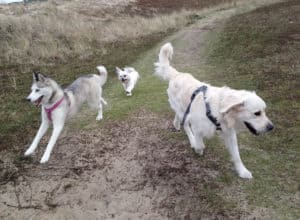
Teaching your dog recall is always a good idea. Even if you don’t want to let them run off-lead often, or even at all, teaching them recall is still a good idea.
Many dogs have accidentally been let outside their premises and met an untimely end.
A delivery person not shutting a gate properly, or workmen not closing a door properly. Being able to call your dog back in such an instance could save their lives.
Focus games have a big influence here too. The more focus games you do the more accustomed your dog will be to focus on you.
Get a long-line lead
Recall training usually begins on a long-line lead in a secure area. When your dog is happy to come back to you every time, then you should try going off-lead in a secure area.
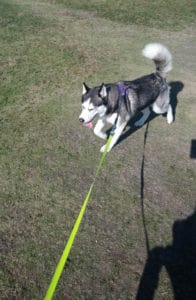
Take your time
It’s a gradual process. Rewarding your dog every time they come near you when they are off-lead reinforces that good things happen when you are near.
Allowing your dog the freedom to run and explore is good for them. Knowing that your dog will come back when you want them too is essential for their safety and your peace of mind.
Be very aware of your surroundings before you let your dog off-lead. Make sure there is no livestock around. And make sure you are not near a busy road.
Excessive Dog Barking

Dogs bark, it’s how they communicate. However, you shouldn’t allow your dog to bark excessively.
Allowing them to bark at everyone and everything will not only become annoying to you and your neighbors but it could also put them in danger from other dogs.
You don’t want your dog to bark at other dogs or people. It is possible to train your dog to focus on you rather than other dogs or people.
It will take a bit of time and consistency, like all good training does, but it can be done.
Focus training
When you are out with your dog and you see another dog/person in the distance get your dog to look/focus on you, reward this behavior. As the dog/person gets closer keep your dog’s focus on you and again reward them.
Once the dog/person has passed and your dog hasn’t barked at them then double reward. By doing this your dog will soon realize that it’s better to focus on you than to bark at dogs/people who are passing.
Door barker
The same method can be applied if your dog barks excessively when people come to your door. You don’t need shock collars or vibrating collars to calm down excessive barking. All you really need are some fun focus games.
After all, you don’t want your dog to be afraid to bark, it’s how they communicate. A dog who is too afraid to bark may not growl (also a communication) and may bite ‘out of the blue’ through fear or stress.
Games make learning fun!
There are many training games online to help you to train your dog. Training using games with your dog makes it an enjoyable experience for both of you.
The more training games you play with your dog, the more your dog will enjoy focusing on you.
It has the added bonus of creating and strengthening a bond between both of you.
I like the British training duo www.absolute-dogs.com. They are very positive and have games for pretty much everything you could want to teach your dog!
If you are worried about your dog getting fat because of all the treats, then I’ll let you into a secret. I use a portion of her dry kibble throughout the day as treats/rewards. I have a separate high-value reward that is only used for behavior that I’m working hard on.
Stay positive
Positive reinforcement training is not a quick fix for unwanted behaviors. It takes time and patience, but the rewards are worth it. You will end up with a happy dog who is always happy to be with you. A dog who is happy to learn and eager to please.
If you don’t feel that you have the time to undertake this type of training then you should seriously consider if you actually have the time for a dog. Dogs need training and boundaries to live happily in our homes and urban neighborhoods.
Say no to fearful training methods
Aversive training methods and tools are cruel and inhumane. There is absolutely no need to inflict pain or fear into a dog to train them.
The science behind canine behavior is now backing this up. Many professional bodies are publishing information to educate people on how and why they should be using positive reinforcement.
Get the right trainer
Training your dog is essential to keep your dog safe and everyone around your dog safe. But just as important is finding the correct trainer to help you with your training journey.
Ask them what method and tools they use. If they rely on negative corrections or aversive training methods then you should walk away.
Ask them if they have ever hit their own dog or a client’s dog with a rolled-up newspaper or towel. If the answer is yes, then walk away.
Good luck and I hope that this article was helpful.
Before you go, you may find these articles interesting:

Leave a Reply